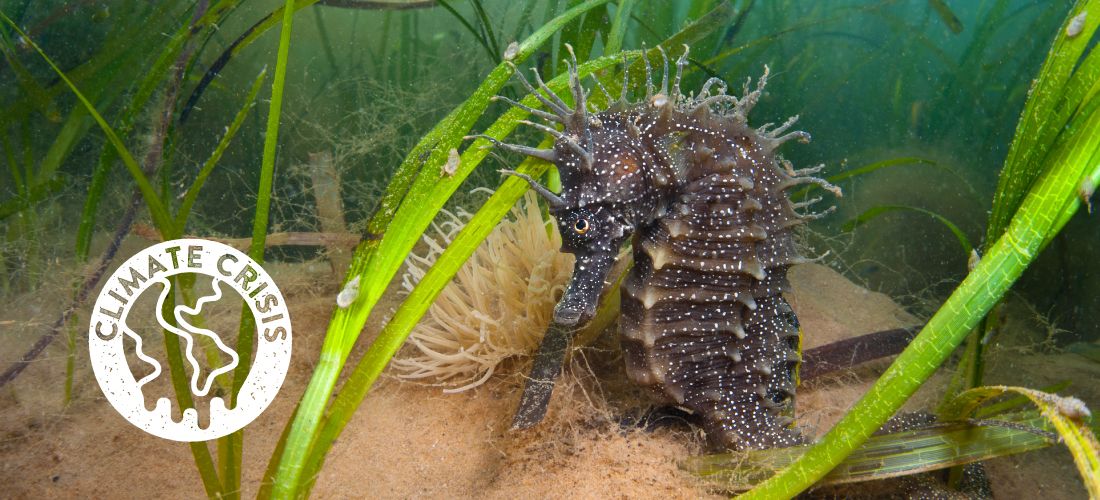Marine Conservation Society’s Appeal for Marine Meadows
Posted on
|
The Marine Conservation Society wants to help vital seagrass around the south coast of England to recover. Seagrass exists in the shallow, sheltered waters around the UK’s coast. It forms marine meadows and these are very productive ecosystems and biodiversity hotspots, with marine life such as the spiny seahorse and the short snouted seahorse. And cuttlefish and sharks breed here. They are also nurseries for Pollock, cod and plaice.
The climate is changing fast, and the impact is clear to see - bushfires, floods, storms, temperatures which are soring, melting ice sheets. Seagrass can help tackle the changing climate. It is a flowering plant, and it lives underwater around the UK's coast in shallow, sheltered waters. Crucially, it absorbs 10% of the carbon buried in ocean sediment every year - so it's a great weapon in tackling global warming. The MCS says that it's estimated that seagrass around the UK shores can absorb and store at least as much carbon per hectare as trees in UK woodlands! The problem is that a major threat to seagrass comes from traditional moorring methods - anchors and chais drag along the seabed. If these traditional moorings can be repaced with advanced systems, where chains are raised off the seabed, it will be possible to regenerate marine meadows. The MCS has trialled these and discovered that they work! So they want to expand it to five marine protected areas. This will enable them to better lock in carbon and be a safe protected habitat for seahorses, cuttlefish and juvenile fish. The Marine Conservation Society needs to install advanced moorings to help replace damaging anchoring methods and let seagrass recover. And they are asking for donations to help them do just that. How appeal donations will help seagrass and seahorses
The Goal of the Appeal: The goal is to raise £105,000 to install over 75 advanced moorings that will replace traditional, damaging anchoring methods and enable seagreass to recover. |
